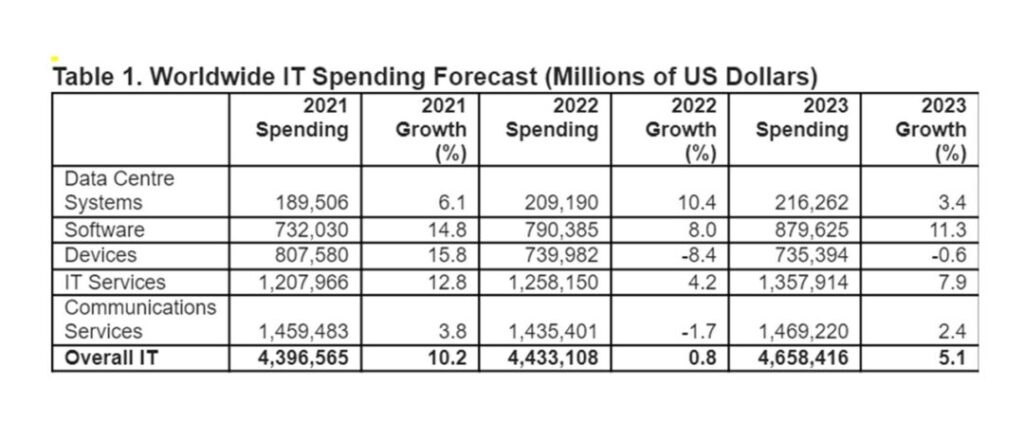Gartner has predicted worldwide IT spending among organisations to increase year-on-year by 5.1 per cent in 2023, as digital business initiatives progress
Demand for IT in 2023 is expected to be strong, as businesses across all sectors push forward with digital initiatives in response to economic turmoil.
While an uncertain economy would usually lead to organisations reducing their outgoings — including IT spending — recent Gartner research surveying over 200 CFOs revealed that 69 per cent plan to increase their spend on digital technologies.
What’s more, the 2023 Gartner CIO and Technology Executive Survey found that CIOs are being tasked with accelerating time to value on digital investments.
>See also: Gartner reveals top strategic tech trends for CIOs to watch in 2023
“Enterprise IT spending is recession-proof as CEOs and CFOs, rather than cutting IT budgets, are increasing spending on digital business initiatives,” said John-David Lovelock, distinguished vice-president analyst at Gartner.
“Economic turbulence will change the context for technology investments, increasing spending in some areas and accelerating declines in others, but it is not projected to materially impact the overall level of enterprise technology spending.
“However, inflation has cut into consumer purchasing power in almost every country around the world. Consumer purchasing power has been reduced to the point that many consumers are now deferring 2022 device purchases until 2023, driving spending on devices down 8.4 per cent in 2022 and 0.6 per cent in 2023.”

Cloud continues to drive initiatives
The technologies being maintained, versus those driving the business, are evident by their projected growth rates in 2023.
While there is sufficient spending within data centre markets to maintain existing on-premises environments, new spending continues to shift to cloud options, demonstrated by 11.3 per cent projected growth for software spending next year.
>See also: Becoming “cloud smart” — the path to accelerated digital innovation
“Companies will use digital technology primarily to reshape their revenue stream, adding new products and services, changing the cash flow of existing products and services, as well as changing the value propositions,” added Lovelock.
“This trend has fed the shift from buying technology to building, composing and assembling technology to meet specific business drivers. This shift is foundational to the growth of cloud over on-premises for new IT spending.
“However, as organisations look to also realise operations efficiency, cost reductions and/or cost avoidance during the current economic uncertainty, more traditional back-office and operational needs of departments outside IT are being added to the digital transformation project list.”
Related:
Gartner top strategic technology trends for 2022 — Gartner expects these 12 technology trends to act as force multipliers of digital business and innovation over the next three to five years. Here’s your quick guide to what the technologies are and why they’re valuable.
IT salaries surging due to software expertise demand — Demand for software expertise is outweighing supply, leading to IT salaries being 64 per cent higher than the UK average pay, according to hackajob research.







